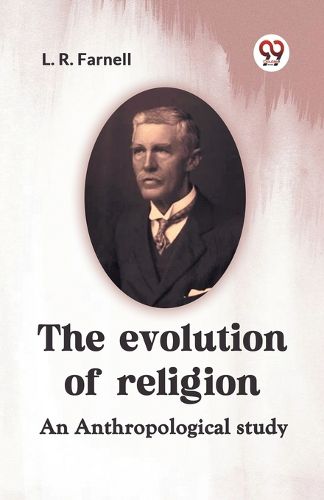Readings Newsletter
Become a Readings Member to make your shopping experience even easier.
Sign in or sign up for free!
You’re not far away from qualifying for FREE standard shipping within Australia
You’ve qualified for FREE standard shipping within Australia
The cart is loading…






This title is printed to order. This book may have been self-published. If so, we cannot guarantee the quality of the content. In the main most books will have gone through the editing process however some may not. We therefore suggest that you be aware of this before ordering this book. If in doubt check either the author or publisher’s details as we are unable to accept any returns unless they are faulty. Please contact us if you have any questions.
"The Evolution of Religion" is a substantial work with the aid of the British classical student, Lewis Richard Farnell (L. R. Farnell), This pioneering book explores the development and evolution of religious ideals and practices across specific civilizations and time intervals. Farnell's complete look at delves into the origins of spiritual concept, rituals, and establishments, supplying a comparative analysis of non-secular evolution from ancient to current societies. He draws upon a wide range of historic and anthropological resources to trace the progression of religious ideas and practices, highlighting the have an impact on of cultural, social, and environmental elements. Farnell's paintings is specially recognised for its emphasis on the evolution of polytheism, discussing how various cultures evolved complicated pantheons of gods and goddesses. He examines the transformations in non-secular thoughts, rituals, and the function of priesthood over centuries. "The Evolution of Religion" is a pioneering work in the field of spiritual research and anthropology. It affords precious insights into the improvement of human spirituality and the interaction among faith and lifestyle. Farnell's meticulous studies and comparative technique offer readers a deeper information of the ancient and sociological forces which have formed non secular perception structures.
$9.00 standard shipping within Australia
FREE standard shipping within Australia for orders over $100.00
Express & International shipping calculated at checkout
This title is printed to order. This book may have been self-published. If so, we cannot guarantee the quality of the content. In the main most books will have gone through the editing process however some may not. We therefore suggest that you be aware of this before ordering this book. If in doubt check either the author or publisher’s details as we are unable to accept any returns unless they are faulty. Please contact us if you have any questions.
"The Evolution of Religion" is a substantial work with the aid of the British classical student, Lewis Richard Farnell (L. R. Farnell), This pioneering book explores the development and evolution of religious ideals and practices across specific civilizations and time intervals. Farnell's complete look at delves into the origins of spiritual concept, rituals, and establishments, supplying a comparative analysis of non-secular evolution from ancient to current societies. He draws upon a wide range of historic and anthropological resources to trace the progression of religious ideas and practices, highlighting the have an impact on of cultural, social, and environmental elements. Farnell's paintings is specially recognised for its emphasis on the evolution of polytheism, discussing how various cultures evolved complicated pantheons of gods and goddesses. He examines the transformations in non-secular thoughts, rituals, and the function of priesthood over centuries. "The Evolution of Religion" is a pioneering work in the field of spiritual research and anthropology. It affords precious insights into the improvement of human spirituality and the interaction among faith and lifestyle. Farnell's meticulous studies and comparative technique offer readers a deeper information of the ancient and sociological forces which have formed non secular perception structures.